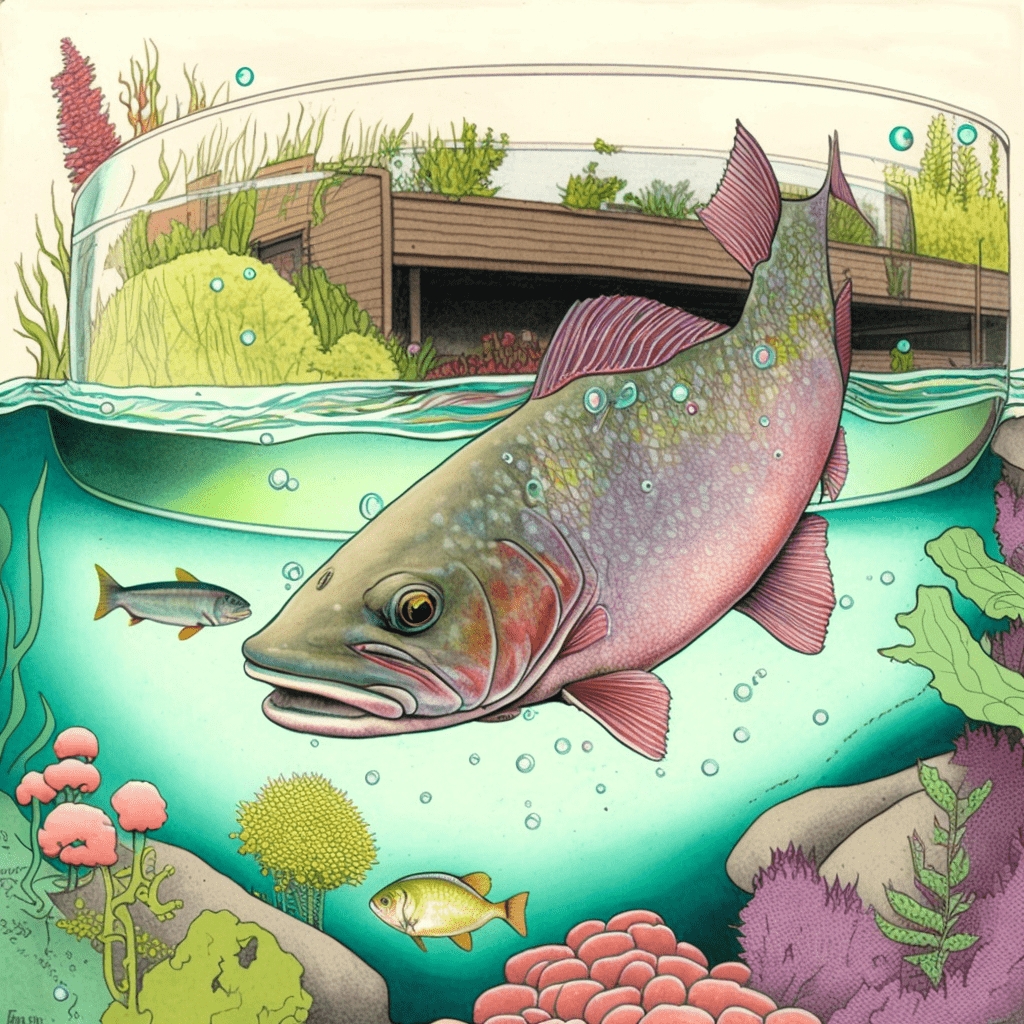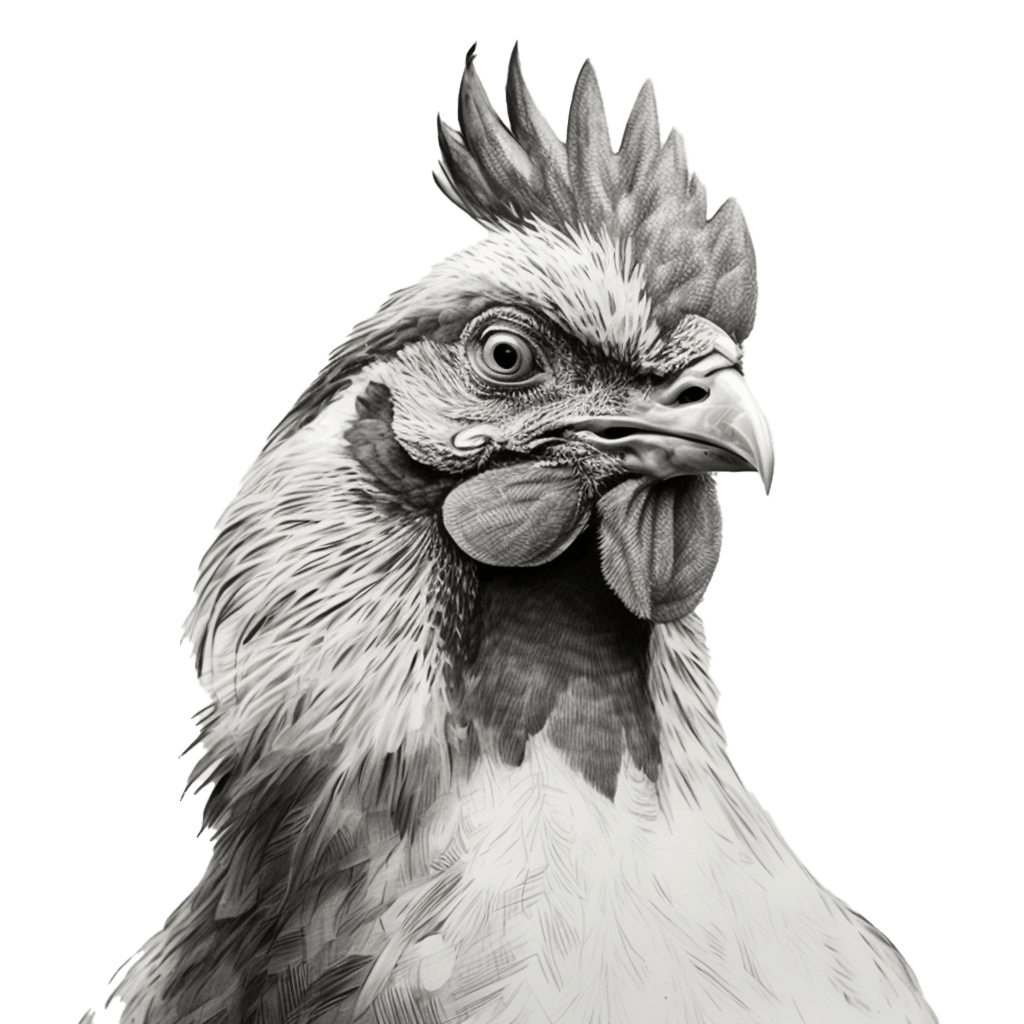
Trout is the name for a number of species of freshwater and saltwater fish belonging to the Salmoninae subfamily of the family Salmonidae. Salmon belong to the same family as trout. Most salmon species spend almost all their lives in salt water. Trout are classified as an oily fish.
The trout is another temperamental fish to grow in an Aquaponic system. It’s very different from the Tilapia in that it’s a cold water fish and likes water temperatures that are much cooler than the tropical 70-75 degrees F of a Tilapia tank. Some growers who reside in colder climates, especially in the winter, will grow Trout during those months. But the cold water makes the selection of plants more limited as many plants prefer the more tropical water temperatures. Trout need pristine water conditions.
There are few different trout species that are commonly used in aquaponic farming set ups. Find our more below:
Rainbow Trout
Description: Rainbow trout have the typical trout-shape with an adipose fin, and a squarish tail that has black spots throughout. The rainbow trout has 10-12 anal rays and a white mouth and gums.
Similar Fish: Golden trout, cutthroat trout
Feeding Habits: Rainbow trout are mainly meat eating fish. They feed on a wide variety of prey including insects, crustaceans, mollusks, fish and fish eggs.
Range: Rainbow trout are native to North America west of the Rockies from Alaska into northwestern Mexico. Introductions have extended the range to include the Great Lakes region, south central Canada and portions of the Great Plains east of the Rockies, and southwestern Mexico.
Habitat: Rainbows are considered fastwater fish, preferring the swift runs and riffle areas of streams. They may live in small creeks, as well as suitable spots in large rivers, the tailwaters of dams, and in lakes and reservoirs. As trout, rainbows live in cold, clean, well-oxygenated water.
Typical Size: Adult rainbow trout average 20 to 23 inches in length and weigh 4 to 8 pounds. Great Lake rainbows can live 6 to 8 years while most small-stream rainbows only live 3 to 4 years.
Brown trout
Description: Brown trout are brown to gold on their back with a cream to slate-colored belly. Most fish have black, gray, yellow and occasionally red spots all surrounded by a white halo. This species has a very noticeable spotted adipose fin between the dorsal and caudal fin. There are no spots on the squarish tail or wormy marks on the back. These features help to distinguish it from other trout.
Feeding Habits: Brown trout are mainly meat eaters and really enjoy eating other fish. They also eat both water and land insects, crayfish and other crustaceans.
Range: Brown trout are found throughout the United States. They can be found in the Great Lakes area, down to the northern edge of Georgia and the Appalachians and every state west of Texas and Nebraska to the Pacific Coast.
Habitat: Brown trout prefer cold water with temperatures ranging up to 79 degrees. Their preferred habitat includes areas of boulders, cobble, logs, rootwads and overhead cover. Brown trout will feed in riffles containing rock as small as gravel.
Typical Size: Adult brown trout average 14 to 24 inches in length and 2.5 to 10 pounds in weight. They can live in the wild an average of 12 years.
The Golden Trout
Description: This is the only species of trout in which the park marks on the side of the fish remain prominent throughout the life of the fish. It also has a red streak similar to the rainbow trout that runs along the side of the fish.
Similar Fish: Brook trout, cutthroat trout, rainbow trout
Feeding Habits: The golden trout feed on a diet of worms, salmon eggs, small crustaceans and a variety of small insects.
Range: The Golden trout is found in the higher elevations of Kern and Tulare counties in California, but have been introduced into the states of Washington, Idaho, and Wyoming.
Habitat: Golden trout are naturally found in clear, cool waters with a temperature of 58-62 degrees at elevations higher the 6000 ft. Although they are being introduced to lower elevations and can now withstand temperatures of 72 degrees. However at these lower elevations and warmer temperatures they do not maintain their brilliant colors.
Typical Size: The golden trout is a slow grower with the average stream living golden getting to 10-14 inches in length and weighing about 1 pound. They can reach a size of 7-9 pounds in a lake environment and grow to 24 to 28 inches in length. The golden trout lives an average of 7 years in streams and up to 12 years in a lake.
The Brook Trout
Description: With an olive back covered by wormlike markings, fiery spotted flanks, and white-trimmed fins, the brook trout is one of the most colorful fish in freshwater.
Similar Fish: Brown trout, golden trout
Feeding Habits: In streams they prefer aquatic insects that live under the rocks and along the stream bottom. Land insects, like ants and beetles, that fall into the water are readily eaten, as are small crayfish. They will eat other small fish and minnows but only when they are easy to catch.
Range: The brook trout is native to northeastern North America. Primarily from the Great Lakes, north to the Hudson Bay and east to the Atlantic and Artic Coasts. They are also located in the Appalachians southeast of the Great Lakes to the northeastern corner of Georgia. Brook trout have also been introduced to higher elevations in the western United States.
Habitat: Brook trout inhabit clear, cold mountain streams and lakes. They prefer a water temperature of 57-61 degrees. They are rarely found in water that is warmer then 68 degrees and if temperatures exceed 77-80 degrees it is fatal.
Typical Size: The average brook trout is 10-12 inches in length and weigh 4-6 pounds. They are slow growing and short lived fish, rarely making it past 8 years.
The Tiger Trout
Description: Tiger Trout, a hybrid cross between a male Brown trout and a female Brook trout, has a unique, dark maze-like pattern all over a brownish, gray body. The belly is yellowish orange as are the pectoral, pelvic and anal fins. The tail fin is square.
Tiger trout are quite piscivorous (fish eaters) from anearly age. They seem to be more willing to hunt for prey in shallower waters than many other trout subspecies are.
Information on different trout species courtesy of http://www.muskytrouthatchery.com/trout-information.htm



